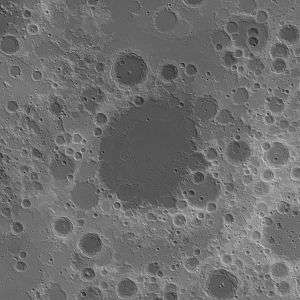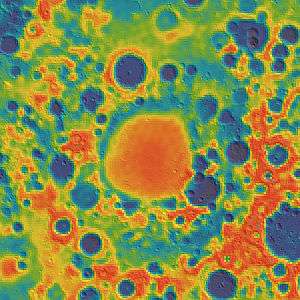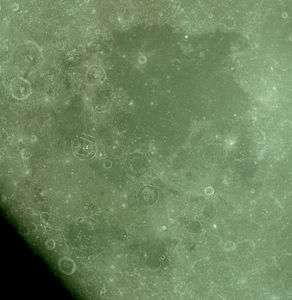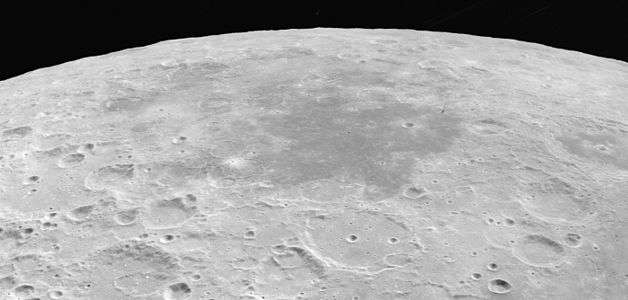Mare Smythii
Mare Smythii /ˈsmɪθiaɪ/ (Latin for "Smyth's Sea") is a lunar mare located along the equator on the easternmost edge of the lunar near side. The Smythii basin where the mare is located is of the Pre-Nectarian epoch, while the surrounding features are of the Nectarian system. The mare material, which makes up the floor of the mare, is a high aluminous basalt, and consists of Upper Imbrian basalt covered by Eratosthenian basalt.
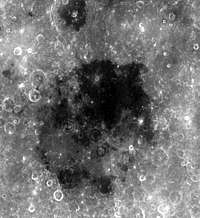 Mare Smythii | |
| Coordinates | 1.3°N 87.5°E |
|---|---|
| Diameter | 373 km (232 mi)[1] |
| Eponym | Sea of William Henry Smyth |
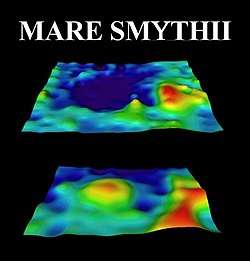
Mare Smythii contains a relatively high number of craters with fractured floors, including the noticeably unusual crater Haldane. This is probably a result of uplift from injection of magma below the mare.[2]
The crater Neper is located to the north of the mare. This crater makes up part of the southern rim of Mare Marginis. Just off to the northwest of the mare are the craters Schubert and Schubert B. The dark mare-filled crater at the southern edge of Smythii is the crater Kästner.
The Mare Smythii is named for the 19th-century British astronomer William Henry Smyth.
References
- "Mare Smythii". Gazetteer of Planetary Nomenclature. USGS Astrogeology. Retrieved 2017-06-05.
- Motomaro Shirao, Charles A. Wood, 2011, The Kaguya Lunar Atlas: The Moon in High Resolution, Plate 6: Mare Smythii. Springer Publications
